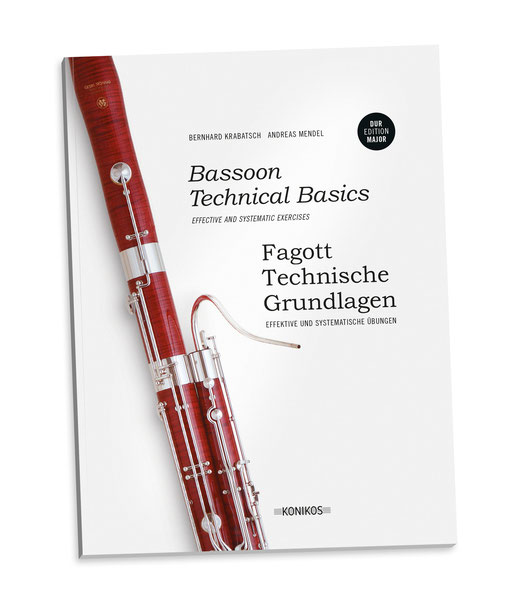Major Edition - Bassoon
Bernhard Krabatsch & Andreas Mendel
This book is a collection of tried and tested exercises, which will enable you to acquire an effective and comprehensive technique. They are systematically arranged and alternate “flowing” exercises, which train fluency and consistency, with “repeated” exercises, which improve the precision of difficult finger movements.
The following exercises appear in each key:
- Scale, possible variations, 5-note scale, scale with auxiliary note,
basic pattern, scale with auxiliary note
- Thirds, repeated, flowing, with auxiliary note
- Fourths, repeated, flowing, with auxiliary note
- Staccato
- Arpeggios, arpeggios with variations
The book will conclude with daily exercises for developing a good sound (Prof. Albrecht Holder), with half-holed fingerings exercises and with another exercise training diminished arpeggios (Prof. David Seidel)
This study book consists of 112 pages and is a wonderful supplement to daily practice for bassoon players of almost every level.
Have a look inside the book here:

Learning bassoon technique.
Background to the booklets: "Technical Basics".
The series "Technical Basics of the Oboe" was published for the first time in 2015, and in 2020 the Bassoon Exercise Booklet was added to this
series. The aim of all these booklets is to help the player to acquire/learn a systematic technique on the instrument - in this case the bassoon. In my opinion, technical exercises should be kept
out of the literature as much as possible and practised separately so that the joy of music and music-making is not overlaid with too many technical aspects.
The booklet is structured in such a way that 8 pages are devoted to one key in various exercises. The so-called modular principle can/should be applied at any time. The order of exercises given
in the booklets is only a suggestion. In the case of difficult keys, it is even extremely useful to begin, for example, with the exercise: "1.4. range of fifths" before
practising the actual scale 1.1. This way you can approach the new/difficult key by using a smaller range. The exercises are structured in such a way that both precision
and speed are practised. Of course, the 8-page range of keys could be expanded considerably, but these 8 pages should not only offer a lot, but also be doable. It is frustrating if you
can never be "finished". This should be avoided at all costs.
So it is important to find a balance between:
- Sustainable improvement in the technical area through intensive work
as well as
- Tasks that are feasible/manageable.
Please also see our exercise book for saxophone & our exercise book for oboe by Andreas Mendel.









